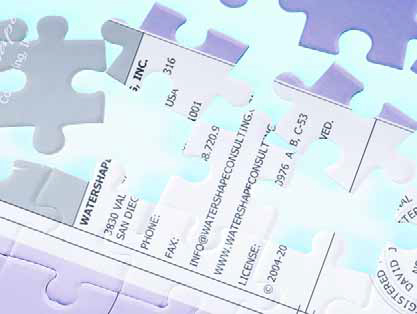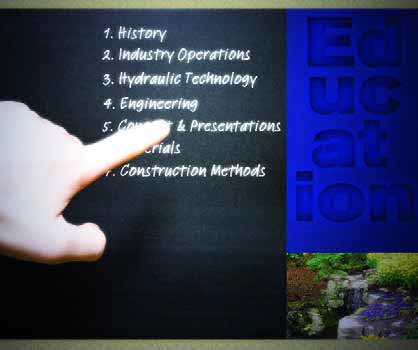Professional Watershaping
It seems to be a trend: In more and more of the conversations I’ve been having with watershapers, the level of interest in what’s involved in working overseas has really spiked in recent weeks and months. I recall a time several years back when curiosity about overseas work focused on the glamour and excitement of stepping into uncharted territory. Now, however, there’s a certain urgency to the inquiries, and my guess is there are at least three reasons behind it. First, there’s the enduring sense of the prestige and energy that
As watershape designs have become more creative, more competitive and ultimately more valuable to our clients than they once were, it’s natural that we have started paying more attention to protecting our output – what some call our “intellectual property.” This is indeed a large and important issue for many people in our business, virtually to the point where watershapers are now facing the same sorts of concerns that have preoccupied architects and landscape architects for decades. And we’ve caught up with our colleagues at a bad time: With technology being what it is now, the opportunities for
In December 2004, WaterShapes introduced ‘The Platinum Standard,’ a registry of projects that embodies watershaping at its finest. Now, as part of our celebration of the magazine’s 100th Issue, Eric Herman offers ‘The Platinum Standard II,’ a fresh set of 20 projects that have graced the pages of the magazine in the past three-and-a-half years – projects that demonstrate clearly that watershaping has become an art form in its own right. I’ll never forget the day Jim McCloskey suggested starting a magazine on systems that contain and control water. We were walking near his home in Woodland Hills, Calif., when he broached the idea, saying it had come to him as something of an epiphany while
I think we can all agree that design communication between architects, engineers, designers and contractors should be clear and concise. If that’s the case, it follows that plans and other construction documents should be uniform in their organization and layout – in other words, that they should follow a set of standards to which everyone in the design/construction community can and will adhere. Why the bother? The plain fact is that any given project involves a cast of characters that will be different – sometimes completely so – from just about any other project. This is why I’m such a strong advocate for
I’ve always believed that pessimism is useless. At times, I think it can even be destructive, which is why I personally beat the drum for positive thinking every chance I get. Sure, there are always going to be those who accuse optimists like me of seeing the world through rose-colored glasses, but I counter that by saying that I also believe that optimism is worthless if positive thoughts aren’t backed up by equally positive actions. That this is the foundation of my philosophy should be obvious to
It’s an unfortunate fact that landscape architects receive little or no formal education in watershaping while they’re in school. As a result, where the typical landscape architect’s irrigation plan will show every pipe, fitting, wire and component for a given project, that same project’s pool plan will carry almost no detail at all. This phenomenon begs the question: Why don’t our colleges and universities do more to educate landscape architects about watershaping? The answer to this question causes me double pain, because I know full well that
Those of us in the design and construction industry are engaged in a singularly complicated human endeavor. To make things work, it’s common for many technical disciplines to come together, including soils and structural engineers and contractors and subcontractors as well as architects, interior designers, landscape architects, lighting designers and watershapers – all working in concert to bring form to the goals and aspirations of the clients. These professionals unite in designing spaces that people use and occupy – a simple yet profound thread that ties all of us engaged in any given project together. Through our combined efforts, we
Many great artists are best known for working in identifiable genres, styles or modes or with specific materials, themes or some other defining detail. From Picasso’s cubist abstractions to Mozart’s cascading melodies or Rodin’s bronzes to Frank Gehry’s sweeping architectural forms, geniuses of all stripes are in one way or another known for qualities that are distinctly theirs. The same holds true for many watershapers, especially those working at the top of the field. While many of us (myself included) cross the lines that divide distinctive modes, styles and genres, even the most free-spirited among us can be
In my November 2007 column, I discussed the power of friendship and how it can enhance our professional and personal lives. Along the way, I used examples from my own career and kept the focus on a personal level. This time around, however, I’ll be broadening the focus and expanding the concept to cover cultural and even global relationships. One of my key points in November was that by surrounding yourself with a circle of diverse, passionate, knowledgeable and thoughtful friends, you






















